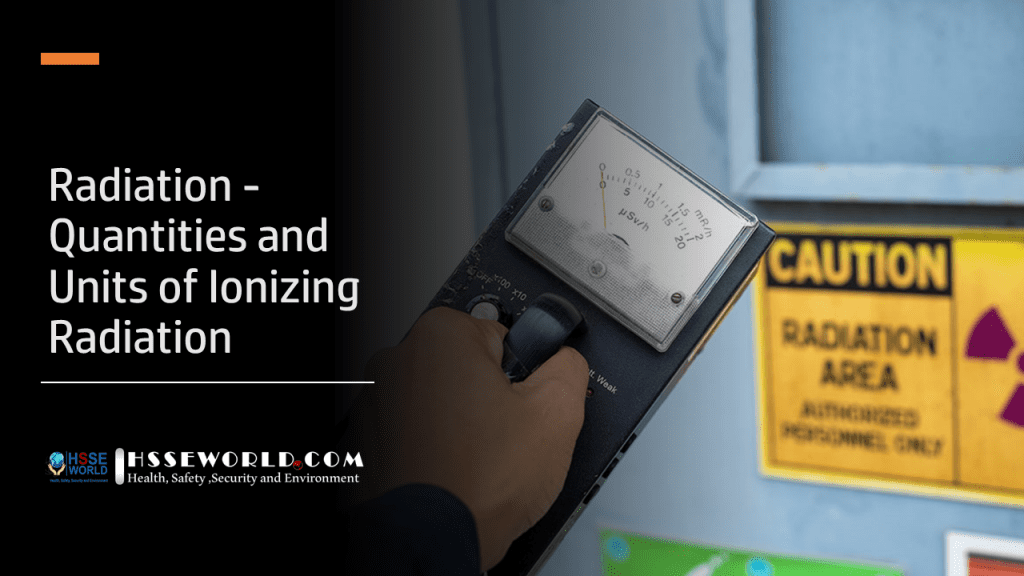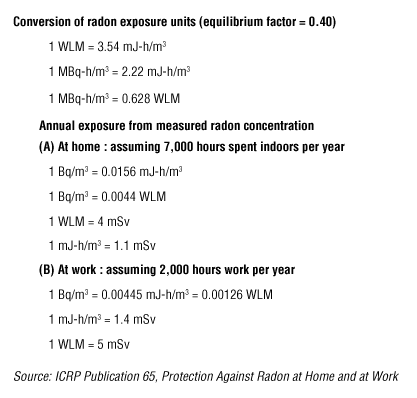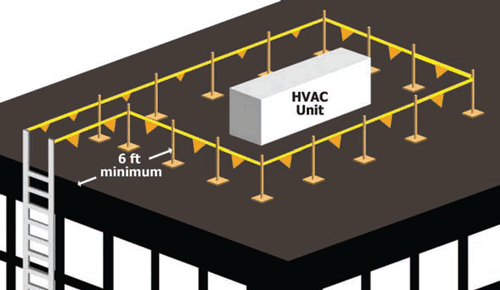Ionizing radiation is radiation that has enough energy to remove electrons from atoms or molecules (groups of atoms) when it passes through or collides with some material. The loss of an electron with its negative charge causes the atom (or molecule) to become positively charged. The loss (or gain) of an electron is called ionization and a charged atom (or molecule) is called an ion.
Note: Microwave, infrared (IR), and ultra-violet (UV) radiation are examples of non-ionizing radiation. Non-ionizing radiation does not have enough energy to remove electrons.

What are some examples of ionizing radiation?
There are natural and artificial sources of ionizing radiation. Artificial sources of radiation include X-ray machines, radioactive isotopes used in nuclear medicine, gamma cameras, nuclear gauges, and nuclear power plants.
X-rays refer to a kind of electromagnetic radiation generated when a strong electron beam bombards metal inside a glass tube. The frequency of this radiation is very high – 0.3 to 30 Ehz (exahertz or billion gigahertz). By comparison, FM radio stations transmit at frequencies around 100 MHz (megahertz) or 0.1 Ghz (gigahertz).
Natural sources of radiation include:
- background radiation from space,
- cosmic radiation from cosmic rays,
- terrestrial radiation from minerals in the earth’s crust,
- radiation from inhaling radon gas,
- radiation from ingesting food and drinking water that may contain radioactive potassium-40.
Minerals such as uranium and thorium are radioactive and give off radiation when the nucleus breaks down or disintegrates. The three kinds of radiation generated by radioactive materials or sources are alpha particles, beta particles, and gamma-rays.
What properties are considered when ionizing radiation is measured?
Ionizing radiation is measured in terms of:
- the strength or radioactivity of the radiation source,
- the energy of the radiation,
- the level of radiation in the environment, and
- the radiation dose or the amount of radiation energy absorbed by the human body.
From the point of view of occupational exposure, the radiation dose is the most important measure. Occupational exposure limits like the ACGIH TLVs are given in terms of the permitted maximum dose. The risk of radiation-induced diseases depends on the total radiation dose that a person receives over time.
What units are used for measuring radioactivity?
Radioactivity or the strength of radioactive source is measured in units of becquerel (Bq).
1 Bq = 1 event of radiation emission or disintegration per second.
One becquerel is an extremely small amount of radioactivity. Commonly used multiples of the Bq unit are kBq (kilobecquerel), MBq (megabecquerel), and GBq (gigabecquerel).
1 kBq = 1000 Bq, 1 MBq = 1000 kBq, 1 GBq = 1000 MBq.
An old and still popular unit of measuring radioactivity is the curie (Ci).
1 Ci = 37 GBq = 37000 MBq.
One curie is a large amount of radioactivity. Commonly used subunits are mCi (millicurie), µCi (microcurie), nCi (nanocurie), and pCi (picocurie).
1 Ci = 1000 mCi; 1 mCi = 1000 µCi; 1 µCi = 1000 nCi; 1 nCi = 1000 pCi.
Another useful conversion formula is:
1 Bq = 27 pCi.
Becquerel (Bq) or Curie (Ci) is a measure of the rate (not energy) of radiation emission from a source.
What does half-life mean when people talk about radioactivity?
Radiation intensity from a radioactive source diminishes with time as more and more radioactive atoms (radionuclides) emit energy to become stable atoms. Radioactive decay is the decline in radiation intensity. Half-life is the time after which the radiation intensity is reduced by half. This happens because half of the radioactive atoms will have decayed in one half-life period. For example, a 50 Bq radioactive source will become a 25 Bq radioactive source after one half-life.
| Table 1 Radioactive Decay | |
|---|---|
| Number of half-lives elapsed | Percent radioactivity remaining |
| 0 | 100 |
| 1 | 50 |
| 2 | 25 |
| 3 | 12.55 |
| 4 | 6.25 |
| 5 | 3.125 |
Half-lives differ widely from one radioactive material to another and range from a fraction of a second to millions of years.
What units are used for measuring radiation energy?
The energy of ionizing radiation is measured in electronvolts (eV). One electronvolt is an extremely small amount of energy. Commonly used multiple units are kiloelectron (keV) and megaelectronvolt (MeV).
6,200 billion MeV = 1 joule
1 joule per second = 1 watt
1 keV = 1000 eV, 1 MeV = 1000 keV
Watt is a unit of power, which is the equivalent of energy (or work) per unit time (e.g., minute, hour).
What units are used for measuring radiation exposure?
X-ray and gamma-ray exposure is often expressed in units of roentgen (R). The roentgen (R) unit refers to the amount of ionization present in the air. One roentgen of gamma- or x-ray exposure produces approximately 1 rad (0.01 gray) tissue dose (see next section for definitions of gray (Gy) and rad units of dose).
Another unit of measuring gamma-ray intensity in the air is “air dose or absorbed dose rate in the air” in grays per hour (Gy/h) units. This unit is used to express gamma-ray intensity in the air from radioactive materials in the earth and in the atmosphere.
What units are used for measuring radiation dose?
When ionizing radiation interacts with the human body, it gives its energy to the body tissues. The absorbed dose is the amount of energy absorbed per unit weight of the organ or tissue and is expressed in units of gray (Gy). One gray dose is equivalent to one-joule radiation energy absorbed per kilogram of organ or tissue weight. Rad is the old and still used unit of absorbed dose. One gray is equivalent to 100 rads.
1 Gy = 100 rads
Equal doses of all types of ionizing radiation are not equally harmful to human tissue. Alpha particles produce greater harm than do beta particles, gamma rays and X-rays for a given absorbed dose, so 1 Gy of alpha radiation is more harmful than 1 Gy of beta radiation. To account for the way in which different types of radiation cause harm in tissue or an organ, radiation dose is expressed as equivalent dose in units of sievert (Sv). The dose in Sv is equal to the total external and internal “absorbed doses” multiplied by a “radiation weighting factor” (WR – see Table 2 below) and is important when measuring occupational exposures. Before1990, this weighting factor was referred to as Quality Factor (QF).
| Table 2 Radiation Weighting Factors | ||
|---|---|---|
| Column 1 | Column 2 | |
| Item | Type of Radiation and Energy Range | Weighting Factor |
| 1 | Photons, all energies | 1 |
| 2 | Electrons and muons, all energies1 | 1 |
| 3 | Neutrons2 of energy < 10 keV | 5 |
| 4 | Neutrons2 of energy 10 keV to 100 keV | 10 |
| 5 | Neutrons2 of energy > 100 keV to 2 MeV | 20 |
| 6 | Neutrons2 of energy > 2 MeV to 20 MeV | 10 |
| 7 | Neutrons2 of energy > 20 MeV | 5 |
| 8 | Protons, other than recoil protons, of energy > 2 MeV | 5 |
| 9 | Alpha particles, fission fragments and heavy nuclei | 20 |
1 Excluding Auger electrons emitted from nuclei bound to DNA.
2 Radiation weighting factors for these neutrons may also be obtained by referring to the continuous curve shown in Figure 1 on page 7 of the 1990 Recommendations of the International Commission on Radiological Protection, ICRP Publication 60, published in 1991.
Source: The Canadian Radiation Protection Regulations, Schedule 2 (SOR/2000-203).
Equivalent dose is often referred to simply as “dose” in every day use of radiation terminology. The old unit of “dose equivalent” or “dose” was rem.
Dose in Sv = Absorbed Dose in Gy x radiation weighting factor (WR)
Dose in rem = Dose in rad x QF
1 Sv = 100 rem
1 rem = 10 mSv (millisievert = one thousandth of a sievert)
1 Gy air dose equivalent to 0.7 Sv tissue dose (UNSEAR 1988 Report p.57)
1 R (roentgen) exposure is approximately equivalent to 10 mSv tissue dose
What is the relationship between SI units and non-SI units?
Table 3 shows SI units (International System of Units or Systéme Internationale d’unités), the corresponding non-SI units, their symbols, and the conversion factors.
| Table 3 Units of Radioactivity and Radiation Dose | |||
|---|---|---|---|
| Quantity | SI unit and symbol | Non-SI unit | Conversion factor |
| Radioactivity | becquerel, Bq | curie, Ci | 1 Ci = 3.7 x 1010 Bq = 37 Gigabecquerels (GBq) 1 Bq = 27 picocurie (pCi) |
| Absorbed dose | gray, Gy | rad | 1 rad = 0.01 Gy |
| “Dose” (Equivalent dose) | sievert, Sv | rem | 1 rem = 0.01 Sv 1 rem = 10 mSv |
What is a “committed dose”?
When a radioactive material gets in the body by inhalation or ingestion, the radiation dose constantly accumulates in an organ or a tissue. The total dose accumulated during the 50 years following the intake is called the committed dose. The quantity of committed dose depends on the amount of ingested radioactive material and the time it stays inside the body.
What is an “effective dose”?
The effective dose is the sum of weighted equivalent doses in all the organs and tissues of the body.
Effective dose = sum of [organ doses x tissue weighting factor]. Effective dose is measured in sieverts (Sv).
Tissue weighting factors (Table 4) represent relative sensitivity of organs for developing cancer.
| Table 4 Organ Or Tissue Weighting Factors | ||
|---|---|---|
| Column 1 | Column 2 | |
| Item | Organ or Tissue | Weighting Factor |
| 1 | Gonads (testes or ovaries) | 0.20 |
| 2 | Red bone marrow | 0.12 |
| 3 | Colon | 0.12 |
| 4 | Lung | 0.12 |
| 5 | Stomach | 0.12 |
| 6 | Bladder | 0.05 |
| 7 | Breast | 0.05 |
| 8 | Liver | 0.05 |
| 9 | Oesophagus | 0.05 |
| 10 | Thyroid gland | 0.05 |
| 11 | Skin1 | 0.01 |
| 12 | Bone surfaces | 0.01 |
| 13 | All organs and tissues not listed in items 1 to 12 (remainder organs and tissues) collectively, including the adrenal gland, brain, extra-thoracic airway, small intestine, kidney, muscles, pancreas, spleen, thymus and uterus2,3 | 0.05 |
| 14 | Whole body | 1.0 |
1 The weighting factor for skin applies only when the skin of the whole body is exposed.
2 When the equivalent dose received by and committed to one of these remainder organs and tissues exceeds the equivalent dose received by and committed to any one of the organs and tissues listed in items 1 to 12, a weighting factor of 0.025 shall be applied to that remainder organ or tissue and a weighting factor of 0.025 shall be applied to the average equivalent dose received by and committed to the rest of the remainder organs and tissues.
3 Hands, feet and the lens of an eye have no weighting factor.
Source: The Canadian Radiation Protection Regulations, Schedule 1 (SOR/2000-203).
What are the limits of exposure to radiation?
The Threshold Limit Values (TLVs) published by the ACGIH (American Conference of Governmental Industrial Hygienists) are occupational exposure limits adopted by many jurisdictions as guidelines or legal limits:
20 mSv – TLV for average annual effective dose for radiation workers, averaged over five years
In Canada, the Radiation Protection Regulations set radiation exposure limits for the public and nuclear energy workers.
The annual effective dose limit is 1mSv for the Canadian public. This dose limit aligns with the International Commission on Radiological Protection (ICRP) recommended annual dose limit of 1 mSv for the general public.
Based on information from regular monitoring of the most exposed workers, such as a radiographer, shows that the average annual doses are 5 mSv per year.
What are the main ways to control radiation exposure?
The main ways to control radiation exposure include engineering controls, administrative controls and personal protective equipment. Examples of these controls include:
- Education and training
- Reducing exposure time
- Increasing the distance from the radiation source
- Using a physical barrier that modifies the pathway between worker and source of radiation e.g., concrete or lead
- Monitoring of exposures (individual and collective monitoring)
- Recording exposures
- Providing health surveillance
- Promoting a health and safety culture
- Complying with established radiation exposure (dose) limits
Approximately forty-four (44) percent of monitored workers worldwide are exposed to artificial sources of radiation. Of those workers exposed to artificial sources, seventy-five percent work in the medical sector. Table 5 shows trends in global radiological exposure of workers since the 1970s.
| Table 5 Trends in Global Radiological Exposure of Workers (mSv)* | ||||
|---|---|---|---|---|
| Sources | 1970s | 1980s | 1990s | 2000s |
| Natural | ||||
| Air crew | – | 3.0 | 3.0 | 3.0 |
| Coal mining | – | 0.9 | 0.7 | 2.4 |
| Other mining** | – | 1.0 | 2.7 | 3.0 |
| Miscellaneous | – | 6.0 | 4.8 | 4.8 |
| Total | – | 1.7 | 1.8 | 2.9 |
| Artificial | ||||
| Medical uses | 0.8 | 0.6 | 0.3 | 0.5 |
| Nuclear industry | 4.4 | 3.7 | 1.8 | 1.0 |
| Other industries | 1.6 | 1.4 | 0.5 | 0.3 |
| Miscellaneous | 1.1 | 0.6 | 0.2 | 0.1 |
| Total | 1.7 | 1.4 | 0.6 | 0.5 |
* Estimates of average effective dose per worker in a year.** Uranium mining is included in nuclear industry.
Source: Radiation: Effects and Sources, United Nations Environmental Programme (UNEP), 2016
What effects do different doses of radiation have on people?
One sievert is a large dose. The recommended TLV is an average annual dose of 0.05 Sv (50 mSv).
The effects of being exposed to large doses of radiation at one time (acute exposure) vary with the dose. Here are some examples:
10 Sv – Risk of death within days or weeks
1 Sv – Risk of cancer later in life (5 in 100)
100 mSv – Risk of cancer later in life (5 in 1000)
50 mSv – TLV for annual dose for radiation workers in any one year
20 mSv – TLV for annual average dose, averaged over five years
What are “working-level” and “working-level month”?
In underground uranium mines, as well in some other mines, radiation exposure occurs mainly due to airborne radon gas and its solid short-lived decay products, called radon daughters or radon progeny. Radon daughters enter the body with the inhaled air. The alpha particle dose to the lungs depends on the concentration of radon gas and radon daughters in the air.
The concentration of radon gas is measured in units of picocuries per litre (pCi/L) or becquerels per cubic metre (Bq/m3) of ambient air. The concentration of radon daughters is measured in working level (WL) units this is a measure of the concentration of potential alpha particles per litre of air.
The worker’s exposure to radon daughters is expressed in units of Working Level Months (WLM). One WLM is equivalent to 1 WL exposure for 170 hours.
1 WL = 130,000 MeV alpha energy per litre air
= 20.8 µJ (microjoules) alpha energy per cubic meter (m3) air
WLM = Working Level Month
= 1 WL exposure for 170 hours
1 WLM = 3.5 mJ-h/m3
Often people use the concentration of radon gas (pCi/L) in the air to estimate the WL level of radon daughters. Such estimates are subject to error because the ratio of radon to its decay products (radon daughters) is not constant.
Equilibrium factor is the ratio of the activity of all the short-lived radon daughters to the activity of the parent radon gas. Equilibrium factor is 1 when both are equal. Radon daughter activities are usually less than the radon activity and hence the equilibrium factor is usually less than 1.

mJ-h/m3 = millijoule hours/per cubic metre
MBq-h/m3 = megabecquerel hours per cubic meter
Joule is unit of energy
1 J = 1 Watt-second = Energy delivered in one second by a 1 Watt power source
1 calorie = 4.2 J
MBq/m3 = megabecquerel per cubic metre
WLM = Working Level MonthsDocument last updated on October 4, 2016




